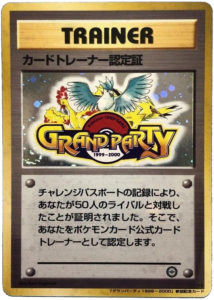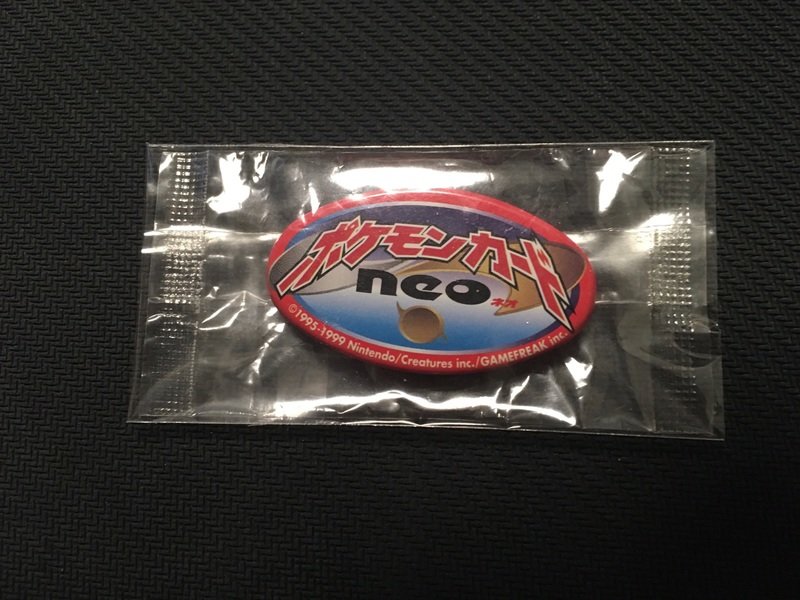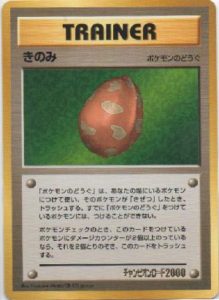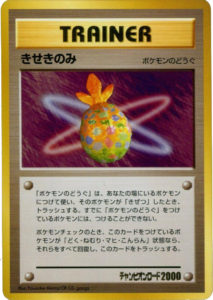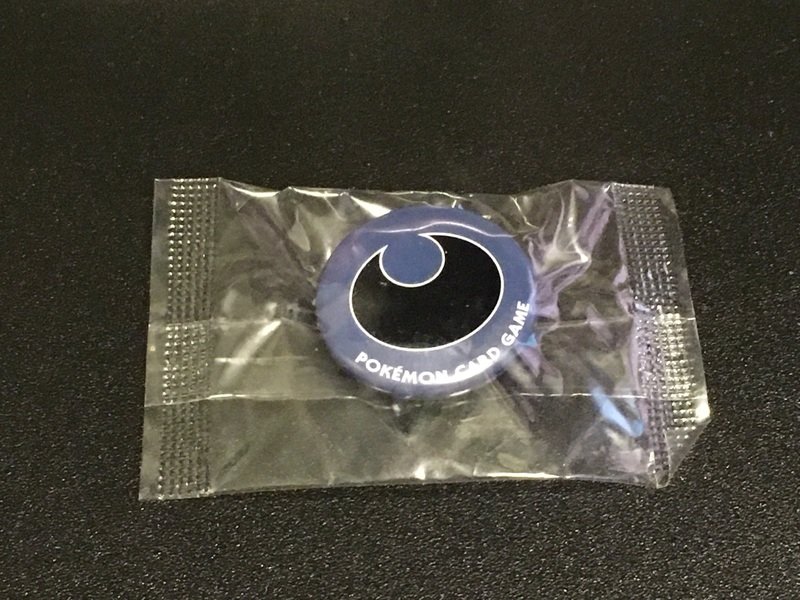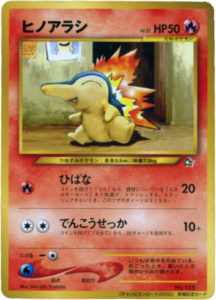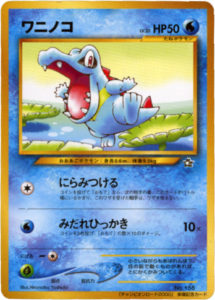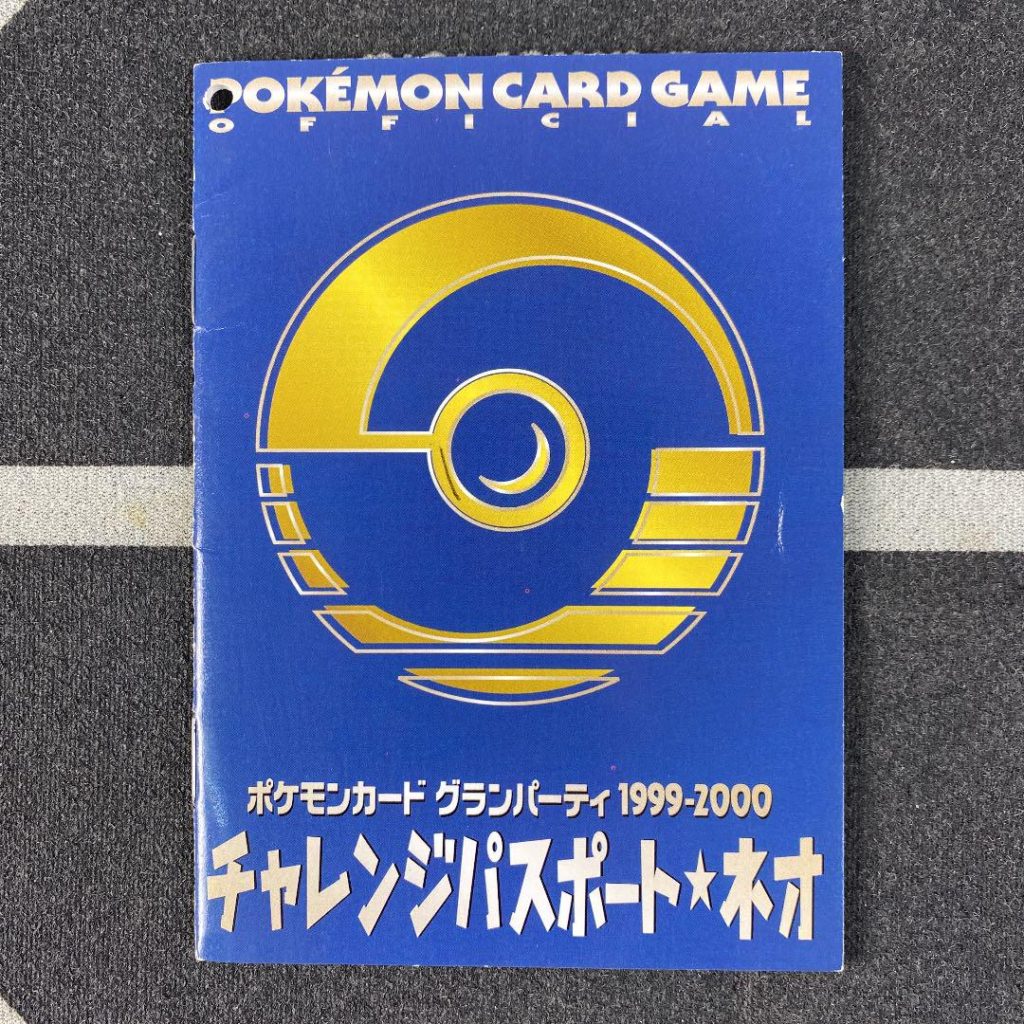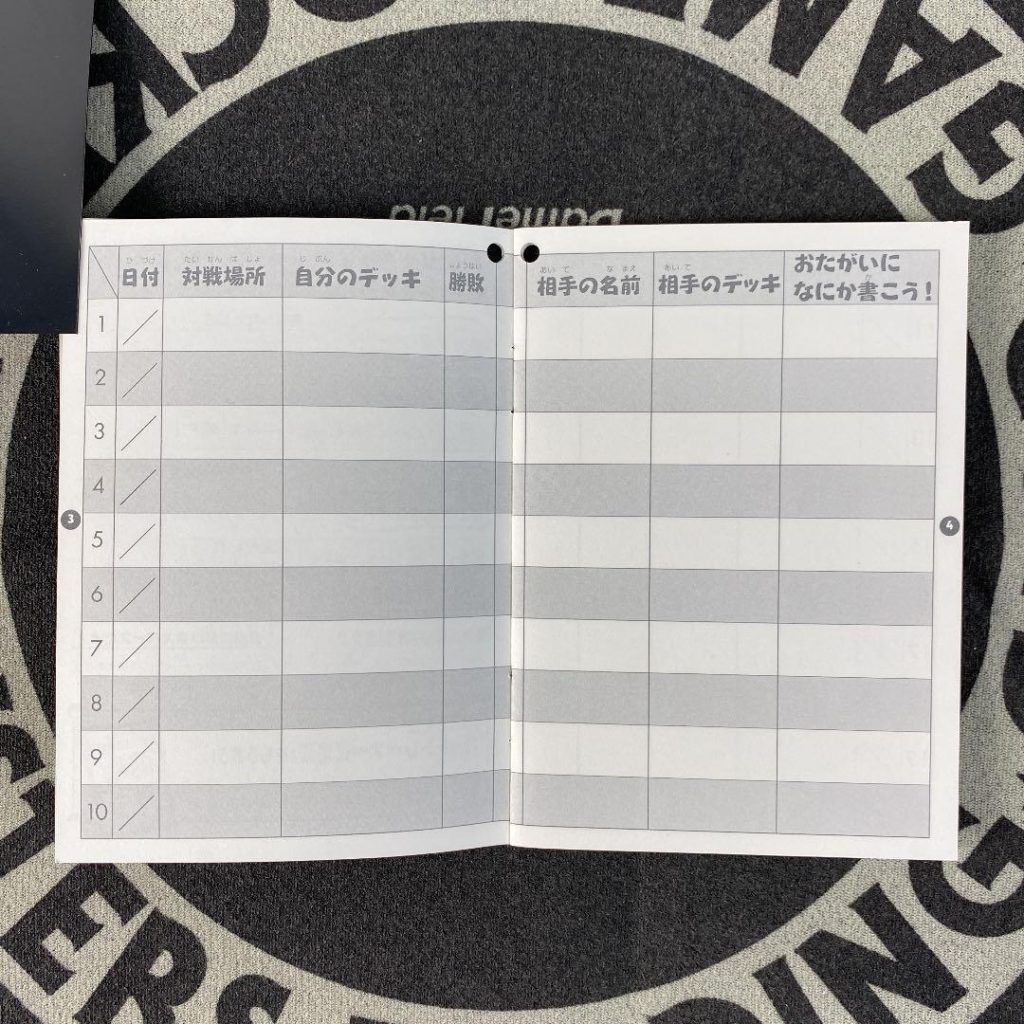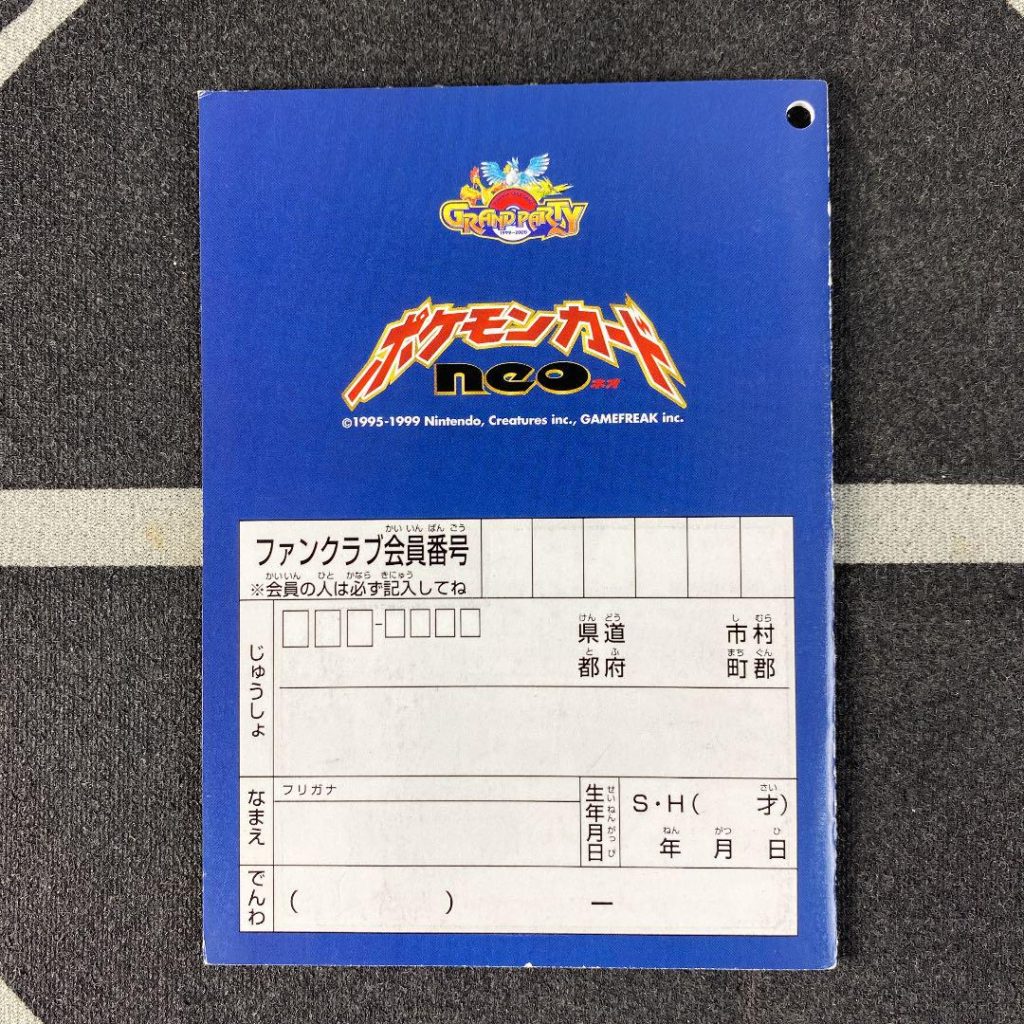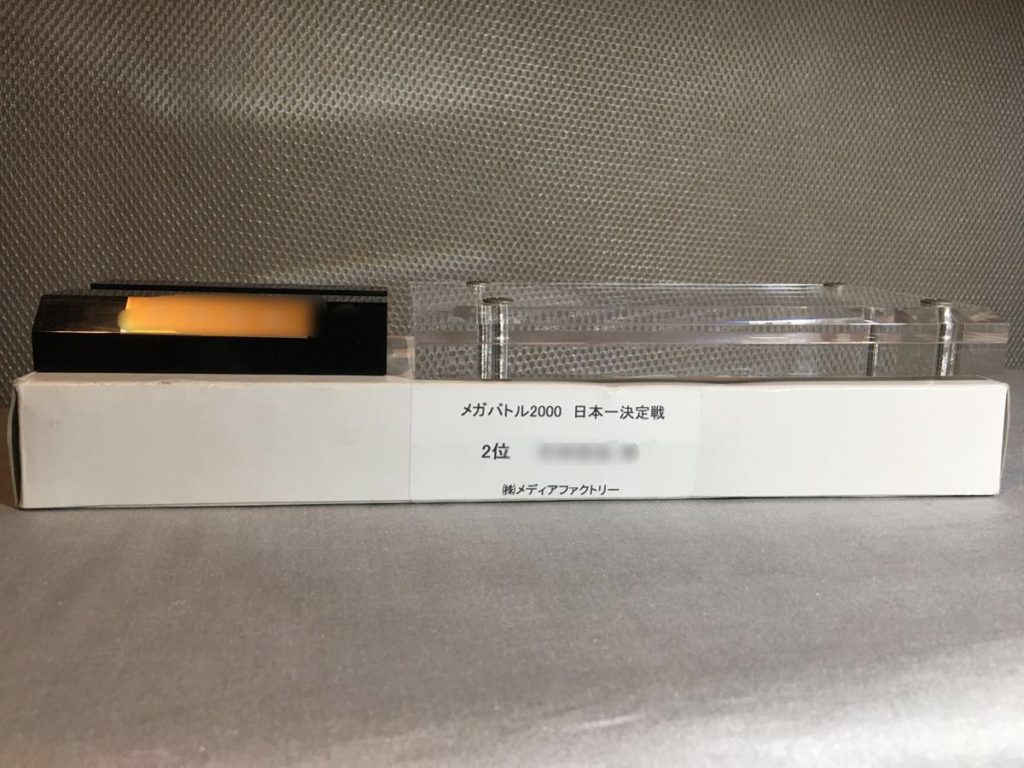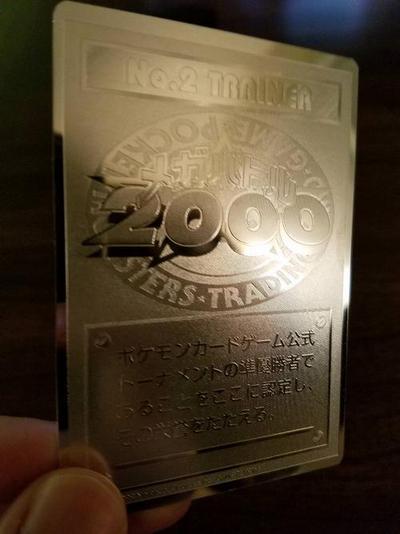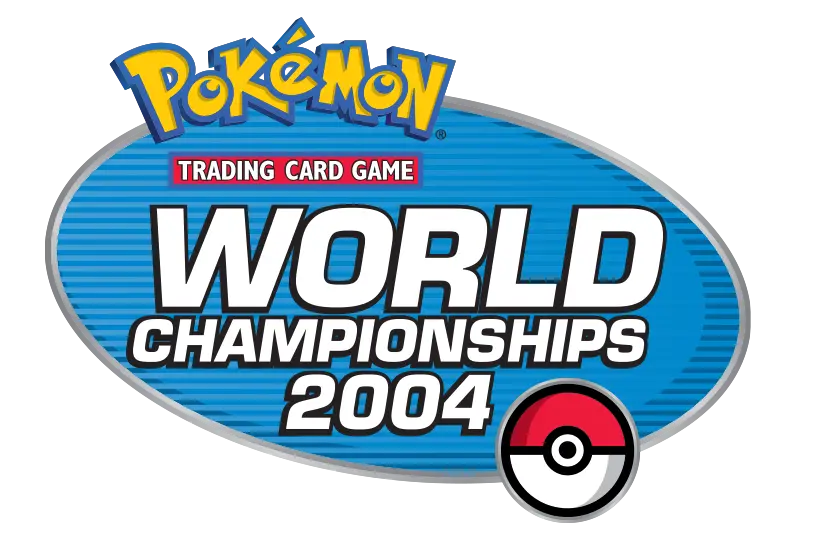Champion Road 2000 was a regional tournament circuit and national championships that concluded the 1999 – 2000 Grand Party Campaign that had started with the Challenge Road 1999 Summer. The tournaments would run from January 9, 2000 to February 20, 2000. The national championship finals for Champion Road would occur on February 26, 2000.
It was the 3rd regional tournament circuit of the Grand Party campaign, with the Challenge Road 1999 Summer and Battle Road 1999 Autumn preceding it. Champion Road was also deemed the 4th official tournament, despite the Tropical Mega Battle Best in Japan 1999 and Secret Super Battle Best in Japan 1999 national championships happening in the previous year. For reference, the previous official national Best in Japan tournaments were:
- 1st Official Tournament at World Hobby Fair (June 14, 1997)
- 2nd Official Tournament “Charizard Mega Battle” (April 26, 1998)
- 3rd Official Tournament “Blastoise Mega Battle” (August 30, 1998)
- (Not counted as an official tournament): Tropical Mega Battle / Secret Super Battle 1999 Best in Japan (August 25-26, 1999 / August 22, 1999)
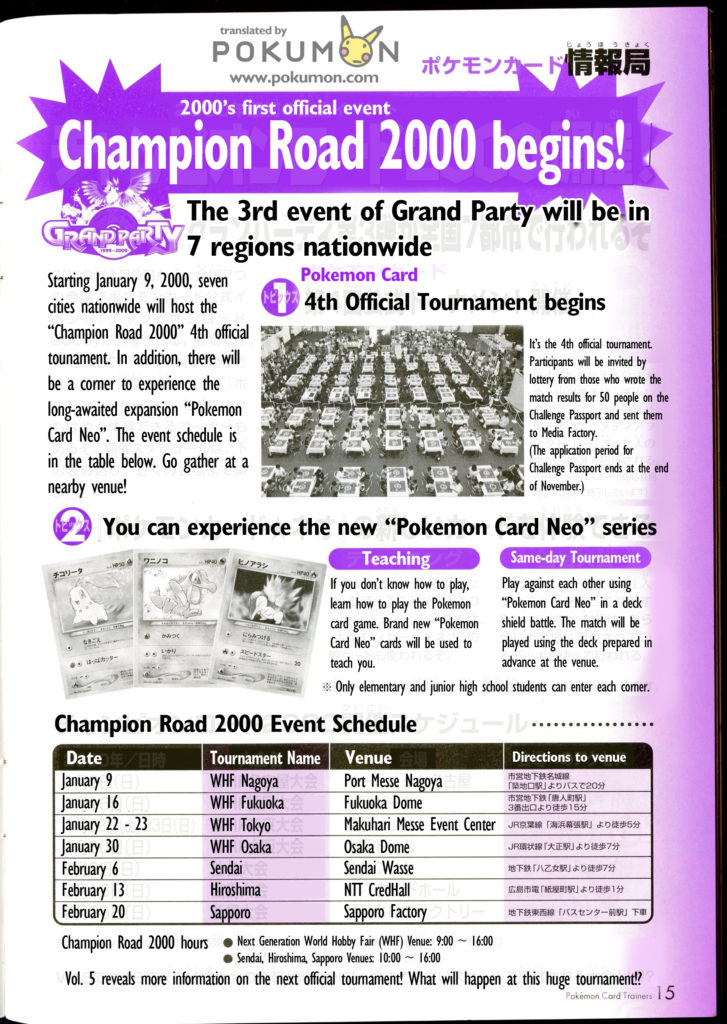
The first 4 regional tournaments took place at the World Hobby Fairs occurring across the country, while the last 3 had their own venues. The tournaments would visit 7 major Japanese cities, with Tokyo having 2 tournaments for a total of 8 events.
Champion Road would be the first chance that players had to experience the Gen 2 cards from the new Neo Genesis set, released on February 4, 2000, and often referred to as “Pokemon Card Neo” throughout tournament reports. The decorations at each venue reflected this, with giant themed balloons featuring the new set logo and starter Pokemon, as well as the new Darkness & Steel energy symbols.
Entry
Champion Road 2000 was only open to players who had filled in all 50 matches in their Grand Party Challenge Passports. Matches could be accumulated at an previous official tournaments or their side events. By filling out the Challenge Passport, trainers earned a chance to enter Champion Road 2000, as well as a Trainer Certification Card promo, more commonly known as the “Grand Party” promo.
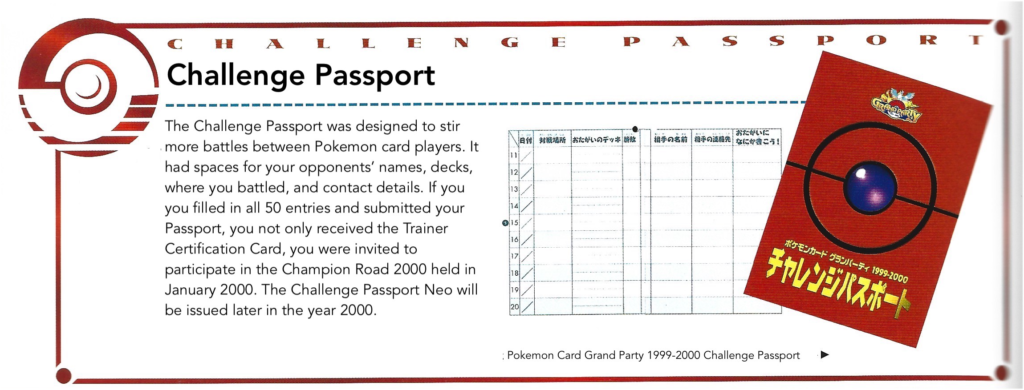
Due to anticipated demand, those who filled out the passport were not guaranteed a spot in the Champion Road tournaments, and were instead entered into a lottery for a chance to participate. The application period for eligibility was closed in November 1999, so the Battle Road 1999 Autumn events were the last events for players to record matches at.
Tournament Structure
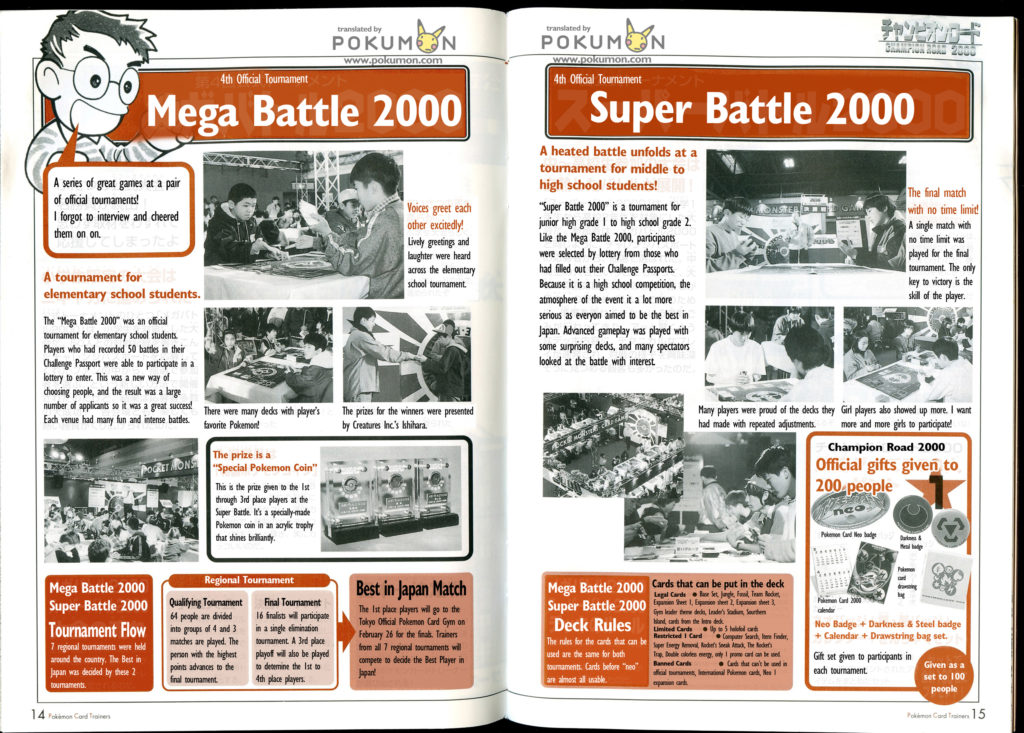
Like previous years’ tournaments, competitors were divided into juniors (elementary school) and seniors (up to high school grade 2). The junior division’s Tropical Mega Battle was rebranded to simply “Mega Battle 2000”, and the senior division’s Secret Super Battle was rebranded to “Super Battle 2000”.

A total of 64 players were admitted for each age division, resulting in a total of 128 participants per tournament.
Qualifying Tournament
During the Qualifying Tournament, players were divided into groups of 4 people each. They played a round-robin amongst each other and scored points based off their wins, losses, and draws. It’s likely that it used the same point system as previous tournaments, with 3 points awarded for wins, 1-2 points for games going to time, and 0 points for a loss. The player with the high point total out of the group of 4 would advance to the final tournament.

Unlike previous years, players were able to use their own decks during the Qualifying Tournament. Previous years had players using a fixed card list or a preconstructed deck. There were specific restrictions on the tournament’s decks.
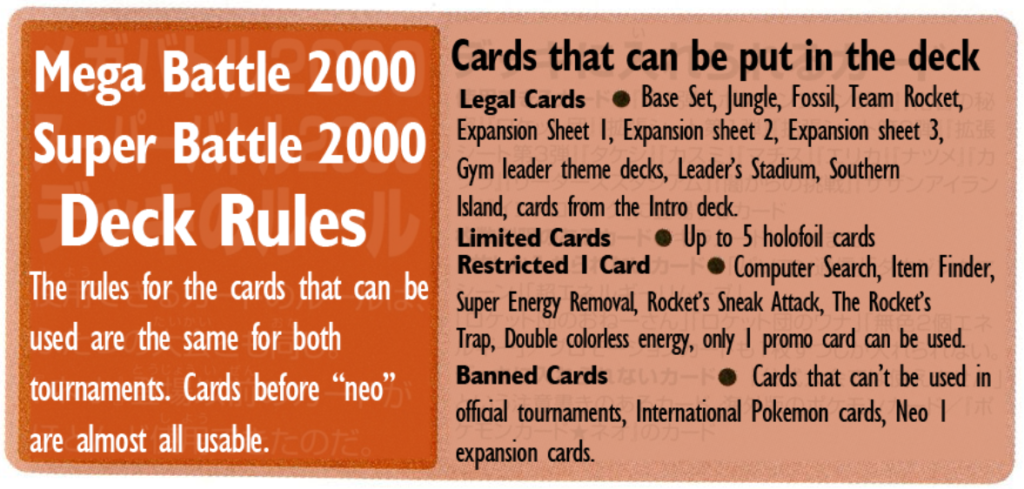
Final Tournament
The 16 players who advanced from the Qualifying Tournament to the Final tournament were paired up against each other in a single elimination tournament.
Unlike the Qualifying Tournament, the final one had no time limit on matches and were played with a full 6 prizes. There was a playoff for 3rd place as well.
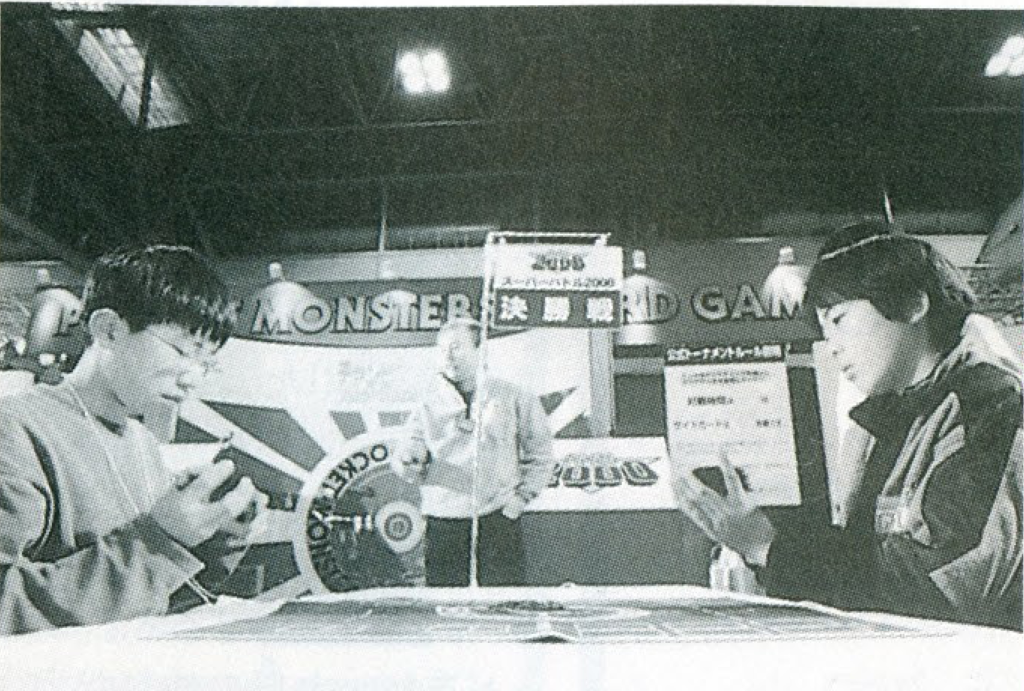
Winners of the regional Champion Road 2000 tournaments did not receive No.1-3 Trainers like in previous tournaments. Instead, the top 3 players received special metal Pokemon coins in acrylic trophies, presented by Tsunekazu Ishihara, one of the original creators of Pokemon.
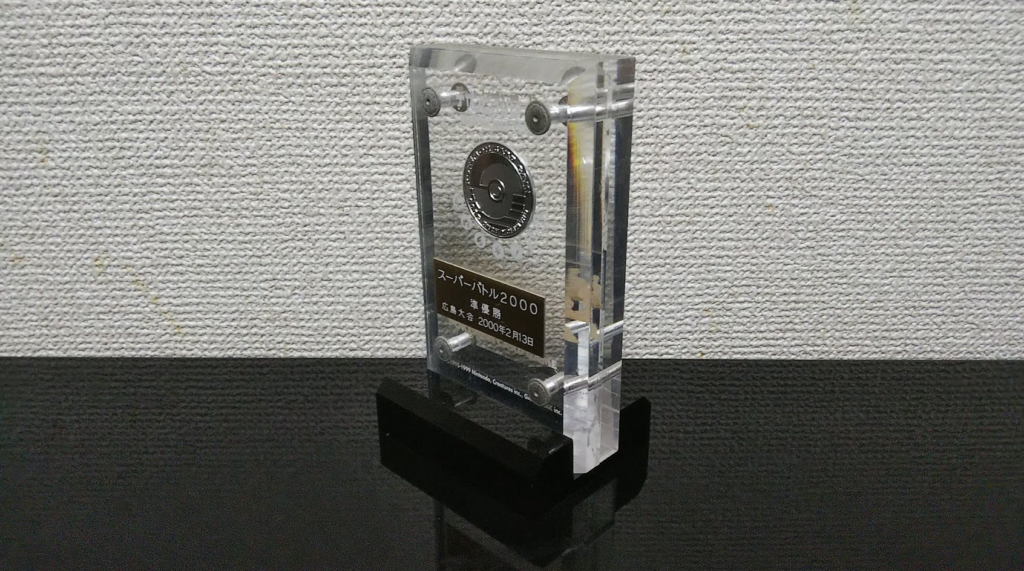
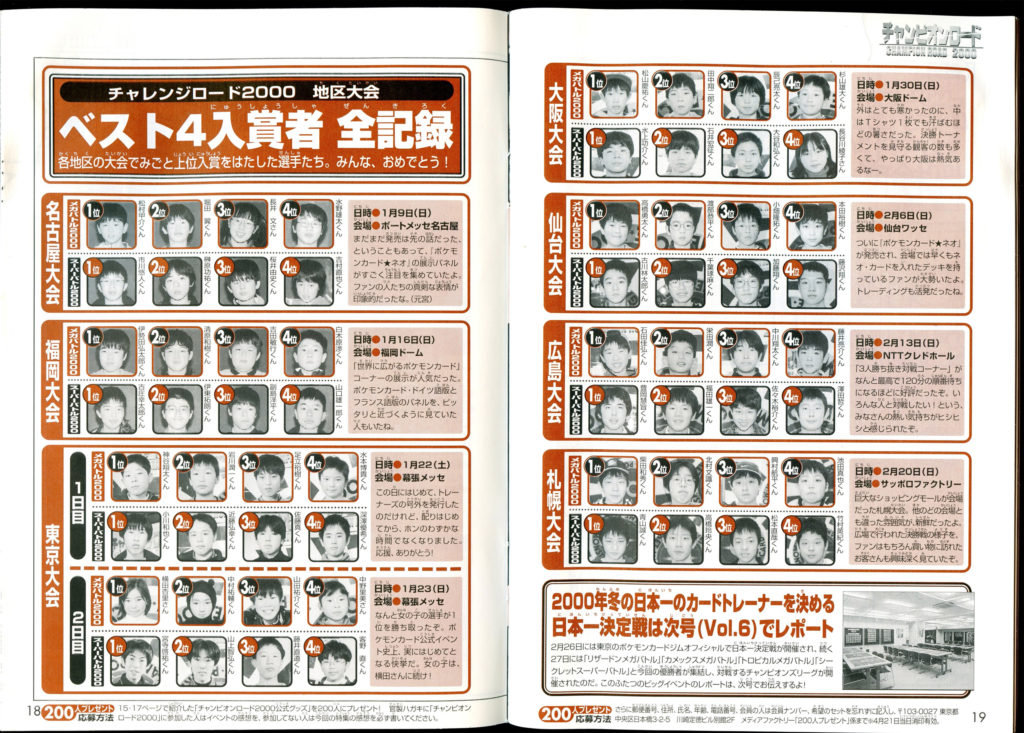
Side Events / Corners

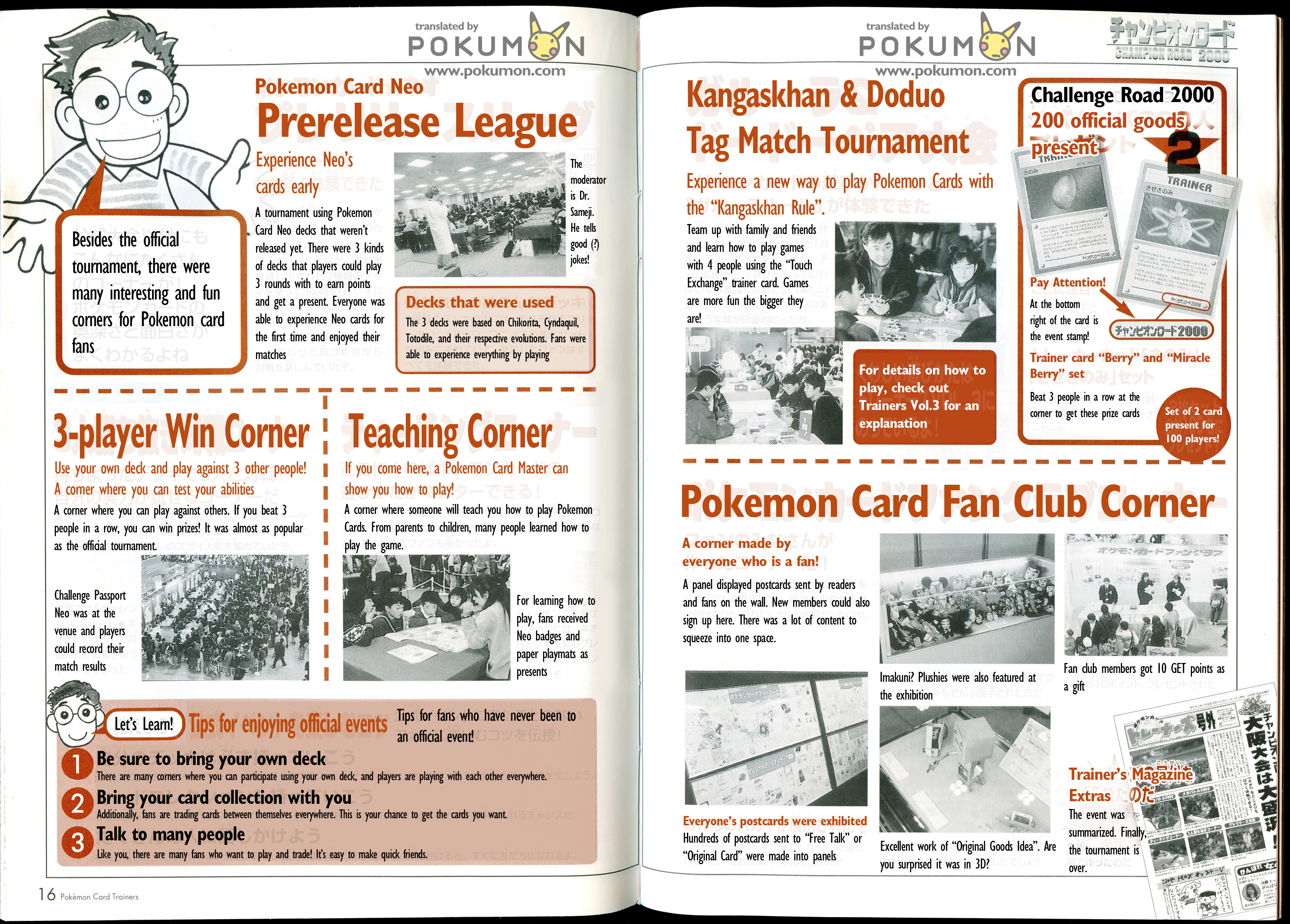
Like previous tournaments, side events (or “corners” as they’re commonly referred to) were scattered around the venue. Players who weren’t participating in the official tournament were able to play in the side corners throughout the day.
Pokemon Card Neo Prerelease League
One of the flagship corners was the Pokemon Card Neo Prerelease League. This allowed players a chance to play with the new Gen 2 Pokemon from the first Neo set early by using one of 3 pre-made decks. Each deck was themed after a Gen 2 starter (Chikorita, Cyndaquil, or Totodile), and featured a full evolution line of each.

Since the first Neo set officially released on February 4, 2000, which was after the first 4 regional tournaments, this would be the first time many players would have the opportunity to play with the cards. Due to demand, entry to the Neo Prerelease League was limited by lottery.
Teaching Corner
Staff members would teach parents and kids how to play the Pokemon TCG here. For learning how to play, participants received a metal Neo badge and a paper playmat.
3-player Win Corner
This was an miniature tournament corner where players could line up to play each other. The first 100 players to win 3 games in a row received a set of promo-stamped Berry and Miracle Berry trainers.
Kangaskhan & Doduo Tag Match Tournament
Similar to previous official tournaments, Champion Road 2000 featured 2v2 tournaments. This year, they also combined the previous “Kangaskhan Rule” and Doduo Tag Match tournaments into a single side event that parents and children could participate together in. This tournament would take place on the main tournament stage, after the official tournament had concluded in the afternoon.

Pokemon Card Fan Club Corner
As with all official tournaments, there was a corner for the Pokemon Card Fan Club. In the past this served as a place for players to register and claim GET points for attending official events, but Champion Road 2000 also added a museum-esque exhibit to the corner.
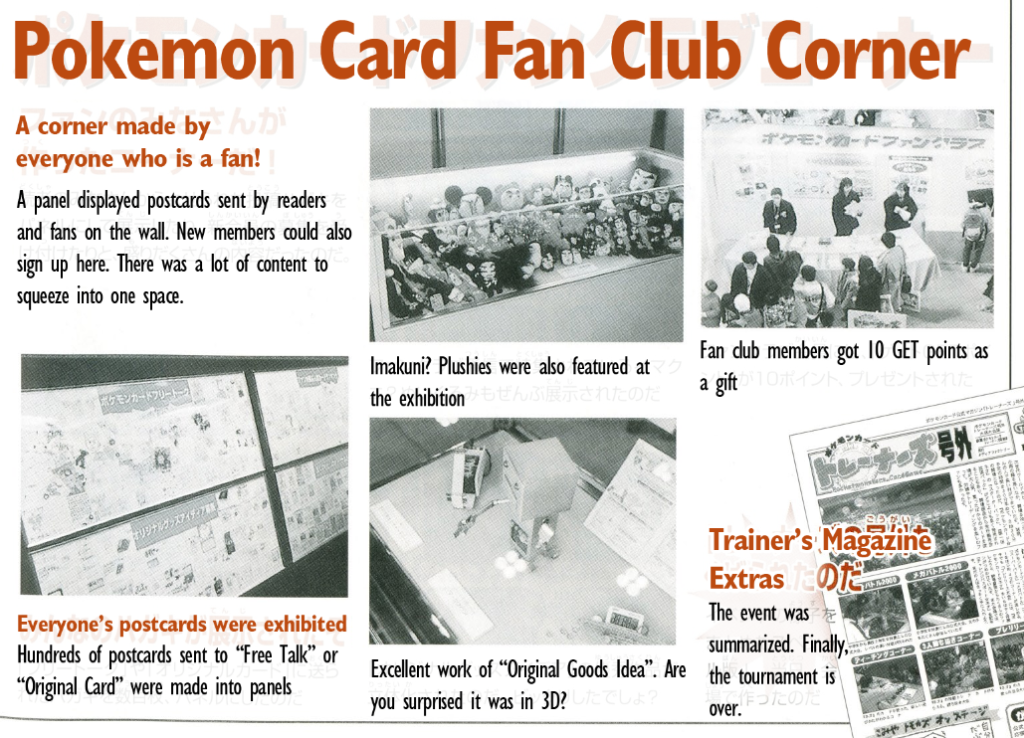
Other Rewards / Memorabilia
There were other gifts and memorabilia distributed at the Champion Road events. Most of these were participation gifts.
Official Gift set

Up to 100 participants from each of the juniors / seniors divisions received an official gift set.
Since each tournament only supported up to 64 people, this means that there were likely gift sets given to people outside the main tournaments at each venue.
This gift set consisted of a Pokemon Neo badge, Darkness & Metal energy symbol badge, a 2000 calendar, and a cloth drawstring bag.
These gifts would be distributed throughout 2000’s future tournaments, like the World Challenge Summer events later in the year.
Gold star stamped Starter Promos
Three promo cards of the Gen 2 starters were distributed at Champion Road 2000 events. They are identical to first Neo set’s printing, except they have a foil gold-stamped set symbol, text in the bottom right corner that says “Champion Road 2000 Commemorative Attendance Card”, and no rarity symbol.
These cards are often confused for the much more common versions that were distributed at the 11th Next Generation World Hobby Fairs. They can be distinguished by the text in the bottom corner, as well as the presence of the gold star stamp.

The 11th Next Generation World Hobby Fair versions were given to all visitors to the event, while the Champion Road 2000 version was distributed in a much more limited fashion. When looking at PSA population reports for the cards, there are even fewer of these starter promos than the Berry / Miracle Berry cards that were given for the 3-player Win Corner.
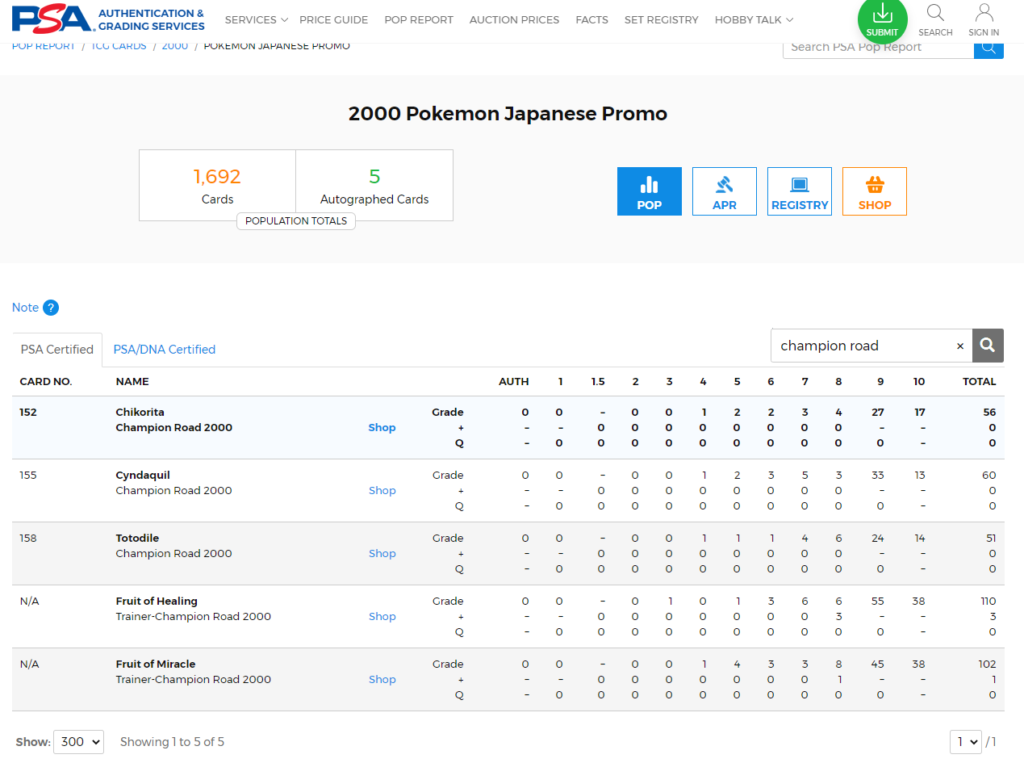
It’s likely that a set of these promos was distributed to all participants of either the main official tournament, or to participants of the Neo Prerelease League. However, no official first party documentation confirms the exact distribution of the cards.
Blue Challenge Passport
Attendees at the event could also pick up a new blue Challenge Passport. During the event, they were able to record matches in this passport, as the prior red one had been filled up to enter the main tournament. Filling up this passport gained the player entry into a prioritized lottery for regional World Challenge Summer tournaments.
Champion Road 2000 “Best in Japan” Match
A week after the last regional Champion Road 2000 tournament in Sapporo, the national championship match for the tournament circuit was held. On February 26, 2000, the 8 winners of the regional events gathered at the Official Tokyo Pokemon Gym. Both juniors and seniors division finals were held on the same day and location.
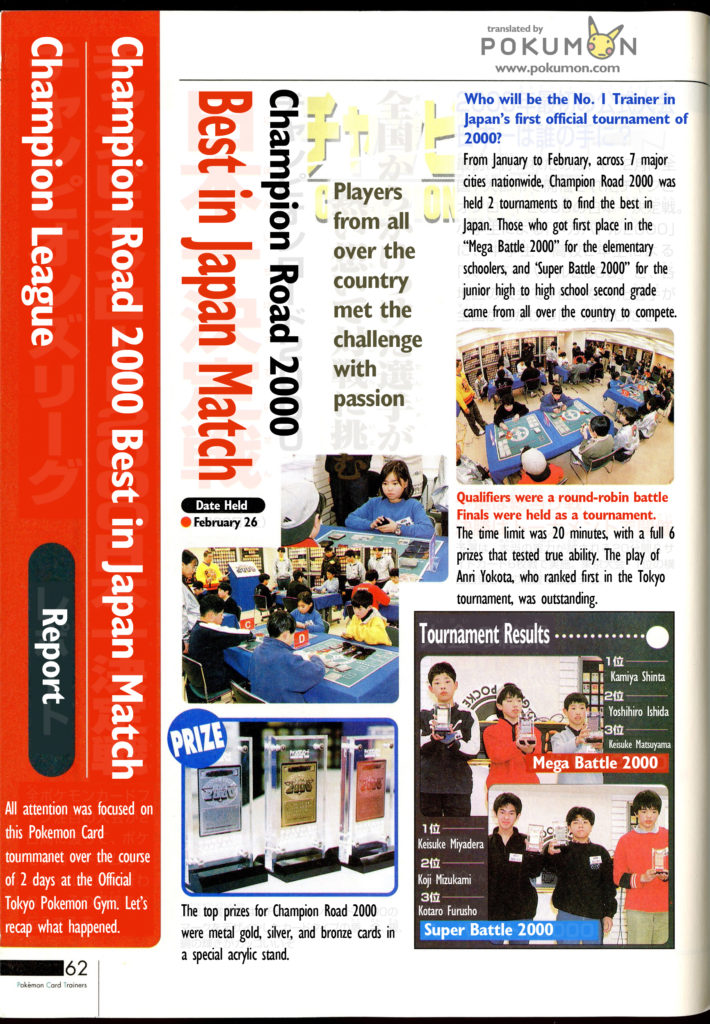
Players brought their own decks and played 20 minute, 6-prize round-robin battles against all other players to determine final tournament seeding. The finals were played as a single elimination tournament as usual for final tournaments, with a playoff to decide 3rd place.
In the end, the top 3 players for each division were:
Mega Battle 2000 (Juniors)
- Champion: Kamiya Shinta (Tokyo regional Day 1, 1st place)
- 2nd place: Yoshihiro Ishida (Hiroshima regional, 1st place)
- 3rd place: Keisuke Matsuyama (Osaka regional, 1st place)
Super Battle 2000 (Seniors)
- Champion: Keisuke Miyadera (Tokyo regional Day 2, 1st place. Previously placed second at the SSB 1999 Best in Japan Match)
- 2nd place: Koji Mizukami (Osaka regional, 1st place)
- 3rd place: Kotaro Furusho (Fukuoka regional, 1st place)
Winners received special metal cards in acrylic statues instead of the medals from the previous year.
These metal cards were the same dimensions as a regular Pokemon TCG card, but were blank on the back.

This 2nd place card reads:
No.2 Trainer
Mega Battle 2000
We recognize the runner-up of the official Pokemon Card Game tournament and honor it.
2nd place trophy card text
It’s likely that the seniors version of the trophy has the same text, but shows the logo of the Super Battle 2000 instead of the Mega Battle 2000.
The day after the Champion Road 2000 finals, the first Champion’s League was held at the same location (Official Tokyo Pokemon Gym). This invite-only tournament pitted all former champions of previous tournaments against each other. Winners of the Champion Road 2000 also participated in this culminating tournament.
Legacy
Champion Road 2000 ended the Grand Party campaign that had started in 1999. This paved the way for the future World Challenge and Battle Road events in 2000 and beyond. Champion Road was one of the last winter tournament circuits, with future ones happening more commonly in the spring, summer, and autumn.
The Challenge Passport system piloted by the Grand Party program would continue in the future. Challenge Road itself would issue a blue Challenge Passport Neo, and the World Challenge 2000 tournaments would introduce the Bronze, Silver, and Gold Challenge Pass systems.
The Champion’s League was also started with the conclusion of Champion Road 2000. This would continue for many years afterwards, and represented the pinnacle of the Japanese TCG tournament scene.
Sources
- https://efour.proboards.com/thread/8873/shyguys-collection?page=4
- https://efour.proboards.com/thread/6057/champion-road-2000-trophy-cards?page=3
- Trainer’s Magazine Vol.4, pg. 15
- Trainer’s Magazine Vol.5, pg. 12-19
- Trainer’s Magazine Vol.6, pg. 62-63





